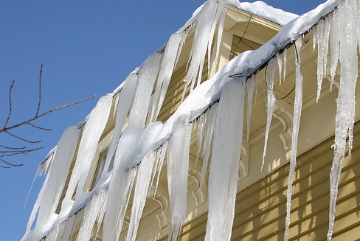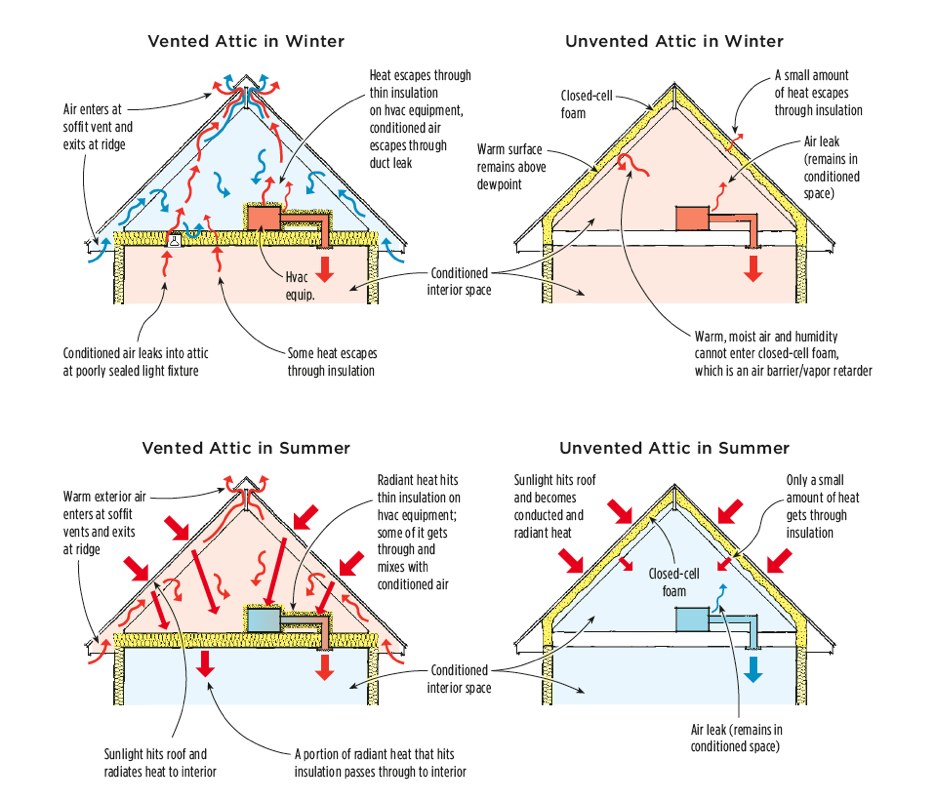Okay, I'll admit that ice dams are probably not on your mind much these days. With Red Sox playing well, and the Celts and Bruins in the playoffs, if you're doing anything around your house, it's likely out in the yard.

But if you suffered through ice dams last winter, it makes sense to take some steps to address the problem before winter rolls around again.
Ice dams are caused by snow on the roof that melts and backs up under the roofing shingles. In an attic that is not insulated- or improperly insulated- heat that is supposed to be keeping you warm passes through the roof structure, melts the snow sitting there. You notice this by the brown water stains on your walls and ceilings.
The real culprit, in my opinion, is that most houses are improperly insulated. The standard technique is to insulate the attic floor with batts. The problem is that this does a very poor job of air sealing between the heated space below and the unheated space above. Heat leaks into the attic through the attic stairs, light fixtures, ducts, around chimneys,pipe chases, etc. It's almost impossible to prevent this.
The solution is to avoid this trap and insulate the roof slopes instead of the attic floor. This can be done with batt material, but batts do a poor job of preventing heat loss around their edges (which is the reason that an air space is required when using batts in roof slopes. A MUCH better solution is to use a material that has a good R-value but one that also effectively cuts off air infiltration. Two such products are blown-in cellulose and sprayed on expanding foam products. Because they fill the framing bays completely- without the gaps around the edges that batts have- the amount of heat loss through the roof is dramatically reduced. They are so effective that it is not necessary to vent your roof, which avoids some of the problems that venting causes (we'll get to those in a future post).
At Landmark Services, we've been using cellulose or foam in the roof slopes instead of batts on the attic floor on our projects for the past 15 years. Not only does this solve the ice dam problem, but the attic is more comfortable year round, and any heating and cooling equipment up there (air handlers, ductwork, etc) is far more efficient. This diagram from the Journal of Light Construction illustrates this point quite well.

Of course, it still makes sense to ensure that when you have a new roof installed, certain precautions are taken to address ice dams from above the roof. These procedures include installing an ice and water barrier along the lower three feet of the roof lines and at other important places such as valleys and around dormers and chimneys. Proper gutter installation is important, too.
